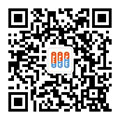5G NR RF and protocol testing services
5G NR, a global 5G standard based on the new air port design of OFDM, is also the foundation of the next generation of very important cellular mobile technology. 3GPP has named the new 5G air interface 5G NR and defined testing specifications. Unless the product meets the standards, they cannot be deployed on the network, indicating the importance of 5G NR testing.


1、We provide RF and signaling testing services for 5G NR
Use a wireless communication testing station to meet the testing requirements of 5G NR, such as ultra reliable and low latency communication (URLLC) and large-scale machine type communication (mMTC).
1. By utilizing the 5G base station simulation function of the device, the FR1 and FR2 frequency bands are combined with the RF room to perform millimeter wave RF or beamforming testing according to the call connection specified in 3GPP;
2. Can utilize the testing platform of the device to provide a comprehensive testing environment;
3. Support 5G NR Non Independent (NSA) mode, use enhanced graphical interface and parameter settings for RF parameter testing, and capture data information;
4. Conduct OTA testing to reduce the impact of factors such as terminal shape and antenna characteristics;
5. Conduct SAR (Specific Absorption Rate) testing to detect the impact of electromagnetic waves on human health;
6. Conduct stable baseband evaluation of 5G NR chipsets through RF cable connection devices;
7. Easily achieve ETWS and CMAS testing through built-in IMS/PWS services;
Using a wireless testing platform, highly integrated testing, supporting the establishment of 5G calls with the DUT in different 5G NR deployment modes and within the FR1 and FR2 frequency bands, and conducting corresponding testing through vector signal analyzers/vector signal generators.
2、 5G NR technology defines two deployment modes
Non independent (NSA) mode, involving E-UTRA (access technology for LTE) and 5G NR RAT;
Independent (SA) mode, allowing user devices to access the 5G core network (5GC) through LTE or 5G NR RAT;
3、 Network characteristics different from previous generations of mobile communication
1) The peak rate needs to reach the standard of Gbit/s to meet the needs of high-definition video, virtual reality, and other large data transmission.
2) The delay level of the air interface needs to be around 1ms to meet real-time applications such as autonomous driving and telemedicine.
3) Super large network capacity, providing connectivity for billions of devices, meeting the needs of IoT communication.
4) The spectral efficiency is more than 10 times higher than LTE.
5) Under continuous wide area coverage and high mobility, the user experience rate reaches 100Mbit/s.
6) The traffic density and connection density have significantly increased.
7) The level of system collaboration and intelligence has been improved, manifested as collaborative networking with multiple users, multiple points, multiple antennas, and multiple uptake, as well as flexible automatic adjustment between networks.
4、 Main workflow
(1) Radio communication testing station
By switching testing applications on the general hardware platform of the device, non signaling and signaling RF TRx measurements and protocol testing are conducted. Build a software testing environment, use mobile terminals to control interfaces, and configure an automated testing system.
(2) Wireless testing platform
Verify the RF and throughput performance of 5G devices through building hardware environments and testing platform software tools. Establish calls with the device under test (DUT) in different 5G NR deployment modes (non independent (NSA) and independent (SA), as well as frequency bands (FR5 and FR1), and perform signaling testing in terms of device RF characteristics, protocol compliance, and functional key performance indicators.
Welcome to consult Deeplight Technology for more testing details. We will provide a complete set of 5G NR testing according to your needs.
Recommended items
-

What are the test standards for 5G product certification in Japan?
Nowadays, 5G communication technology has been vigorously developed in various countries, and certification requirements have also come with it. Currently, 3GPP defines the 5G frequency range as FR1 (450MHz – 6GHz, also known as Sub-6GHz) and FR2 (24.250GHz – 52.6GHz, also known as Above-6GHz or millimeter wave)...View more -

5G mobile phone security and SAR testing
5G mobile phone security and SAR testingView more -

The latest 5G bands recommended by North American mobile operator alliance PTCRB
The division and combination of 5G mobile communication technology is much more complex than 4G. The common large frequency bands are FR1 and FR2, FR1 and FR2 are SA and NSA, NSA is combined with 4G, and the working mode is TDD and FDD, so the confirmation of frequency bands and system is particularly important....View more -

The 5G Sub-6GHz/5G millimeter wave SAR test and 5G CE/FCC SAR test standard
The 5G Sub-6GHz/5G millimeter wave SAR test and 5G CE/FCC SAR test standardView more




